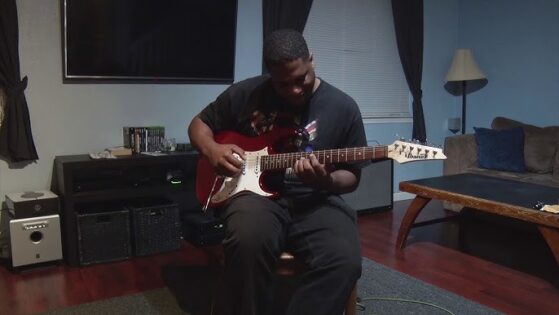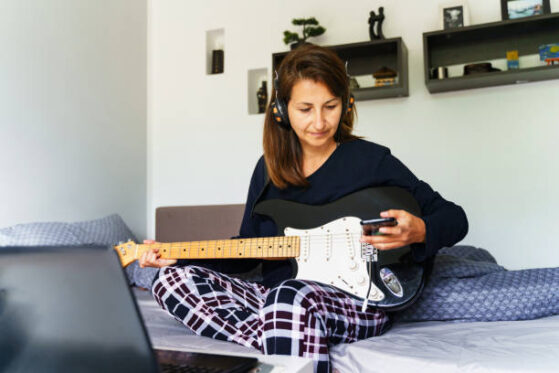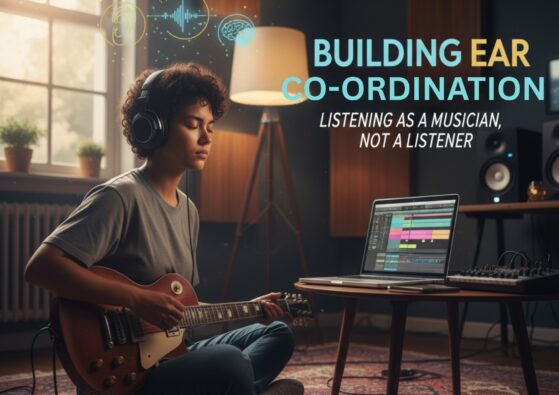For many guitarists, the quest to improve your guitar tone often feels like a journey to the music store. New pedals, amps, cables, or pickups are tempting promises of sonic transformation. However, the secret to great guitar tone is not always found in new gear—in fact, some of the most profound improvements come from how you interact with your existing equipment. Your hands, ears, and mindset are the real tone machines.
In this blog, we’ll take a comprehensive look at how to elevate your guitar tone dramatically, without opening your wallet. Whether you’re playing at home, recording in your bedroom, or performing live, these practical, actionable steps will help you unlock a richer, more expressive sound from your current setup.

Start with Your Playing Technique — Your First and Most Important “Gear”
Your tone begins where your fingers meet the strings. Before you consider any hardware changes, focus on mastering the subtle nuances of your playing technique. This is where you have the most control.
Explore Your Pick Attack and Hand Position
Changing the angle at which your pick strikes the strings or varying the pick pressure can dramatically shift your tone from bright and aggressive to soft and warm. For instance, playing closer to the bridge usually yields a sharper, twangier sound, while playing near the neck produces a rounder, mellower tone.
Try experimenting with fingerpicking, hybrid picking, or even using your thumb to pluck strings for a different texture. The way you mute strings—either with your picking hand or fretting hand—also shapes your tone by controlling unwanted resonance.
Master Vibrato and Bends
Vibrato isn’t just a decorative effect; it breathes life into a note. A well-executed vibrato adds richness and emotional depth, while a shaky or uneven one can detract from your tone. Similarly, smooth, controlled bends keep your notes singing and in tune.

Tighten Your Timing and Coordination — Synchronize Both Hands for Clarity
Once you’ve refined your individual techniques, it’s time to hone the synchronization between your picking and fretting hands. This coordination is essential—not just for accuracy, but to improve your guitar tone overall. When both hands work in unison, your playing sounds clean, articulate, and confident. When they don’t, even the best amp settings can’t hide a tone that comes across as muddy or sloppy.
Working with a metronome can greatly enhance your timing and rhythmic precision. Practice playing simple scales or riffs slowly, focusing on clean execution. Make sure every string either rings out clearly or is muted with intention. Over time, this attention to timing and clarity will refine your tone in ways no gear ever could.

Don’t Underestimate Your Guitar Setup — The Foundation of Good Tone
If your guitar isn’t properly set up, even the best player and amp settings can’t save your tone. A good setup affects playability, intonation, sustain, and overall sound.
Key Setup Factors to Consider:
String action: Low action can cause fret buzz, while high action may make it harder to play cleanly.
Intonation: If your guitar’s intonation is off, chords and notes will sound out of tune even when tuning is correct.
Neck relief: The curvature of the neck impacts string vibration and playability.
Pickup height: The distance between pickups and strings influences output and tonal balance.
If you’re unsure about setting up your guitar yourself, many local guitar shops offer affordable setup services that can make a huge difference.

Refresh Your Strings Regularly — The Unsung Hero of Tone
One of the easiest and most cost-effective ways to improve your guitar tone is by changing your strings regularly. Old strings lose their brightness, sustain, and overall responsiveness, often making your playing sound lifeless or muddy.
Don’t just replace strings when they break—get in the habit of changing them every few months or after heavy use. Additionally, experiment with different string materials and gauges to find what best complements your guitar and playing style. A fresh set of strings can bring new clarity and energy to your sound—all without changing any gear.

Adjust Your Pickup Height — Small Changes, Big Impact
Most players overlook the effect of pickup height on tone. Moving your pickups closer to the strings increases output and can add brightness and punch, but getting too close may cause unwanted magnetic pull on the strings and intonation problems.
Conversely, lowering the pickups slightly can warm up your sound and reduce harshness. Take your time adjusting pickup screws incrementally and test different heights to find the sweet spot.

Use Your Guitar’s Volume and Tone Controls Creatively
Your guitar’s onboard knobs are powerful tone-shaping tools often underutilized. If you’re looking to improve your guitar tone without touching a single piece of external gear, start by exploring these controls more intentionally.
Rolling down the volume knob can clean up your signal, especially when using an overdriven amp, making your tone smoother and more controlled without altering your amp settings. Similarly, the tone knob adjusts the amount of treble your pickups send out. Dialing it back can mellow a harsh sound, while opening it up adds sparkle and clarity to your playing.
Don’t just leave these controls maxed out—try subtle adjustments and listen carefully to how they shape your sound. Sometimes, a small twist can make all the difference.

Refine Your Amp or Interface EQ Settings — Less Is More
When dialing in your amp or audio interface tone controls, resist the urge to crank all the EQ knobs to maximum. Overboosting bass and treble can muddy your tone and mask important frequencies.
Start with all EQ settings at noon (12 o’clock) and make small incremental adjustments. Focus on midrange frequencies to help your guitar cut through the mix.
If you’re recording, consider using your DAW’s EQ to fine-tune your tone further after recording.

Switch Pickup Selections to Add Dynamic Contrast
Most electric guitars have multiple pickups that offer distinct tonal options. Rather than sticking to just one pickup all the time, use your guitar’s pickup selector switch actively.
The neck pickup typically delivers warmer, rounder tones, ideal for solos or jazzier sounds. The bridge pickup tends to be brighter and more aggressive, perfect for rhythm or cutting through a band mix.
Some guitars have middle pickups or combination settings that provide unique, “quacky” tones popular in funk and clean styles.
Changing pickups mid-song or between songs adds tonal variety and expression to your playing.

Record Yourself and Listen Critically
One of the best ways to improve your guitar tone is to record your playing and listen back objectively. When you hear your performance on playback, you may notice tonal issues that aren’t obvious while you’re in the moment—such as muddiness, harshness, or lack of clarity.
This reflective process allows you to experiment with technique, pickup positions, amp settings, and guitar controls, and hear the differences more clearly. Try recording multiple takes with small tonal variations to identify what truly enhances your sound and resonates with your musical intent.

Consider the Room Acoustics — Your Environment Affects Your Tone
Believe it or not, the room you play in has a significant effect on how your tone sounds. Reflections, absorptions, and room size influence what you hear.
Playing in a tiled bathroom will sound drastically different from playing in a carpeted bedroom or a wooden floor studio.
If possible, experiment with playing in different spaces or use acoustic treatment to reduce unwanted reflections and enhance your natural tone.

Shape Your Tone Through Musical Expression and Phrasing
Lastly, remember that tone is about more than just sound—it’s about expression.
Try varying your phrasing to match the style you want:
Use legato techniques, slides, and hammer-ons for smooth, flowing melodies.
Incorporate staccato notes and palm-muted chugs for tight rhythmic parts.
Open chords and arpeggios with ringing notes bring out a richer, acoustic-like tone.
Expressive playing connects your listener emotionally, making your tone come alive.

Conclusion | Your Best Tone Is Already in Your Hands
Improving your guitar tone doesn’t mean buying the latest gear. It’s about unlocking the potential of what you already have through technique, setup, and thoughtful use of your existing tools.
By mastering your playing style, keeping your guitar well-maintained, creatively using your controls, and listening critically, you can transform your sound from ordinary to extraordinary—all without spending a dime.
Start today with these steps, and watch your tone evolve into something uniquely yours.
Ready to take your guitar tone and skills to the next level?
Join The Mystic Keys for personalized Electric Guitar Lessons Online that emphasize tone, technique, and musicality. Unlock your best sound with expert guidance tailored to your goals.
For more information and exciting resources about learning music, visit our website at The Mystic Keys. For more music content and exciting offers follow us on
Facebook, Instagram, YouTube, LinkedIn, Twitter, Pinterest, and Threads,








